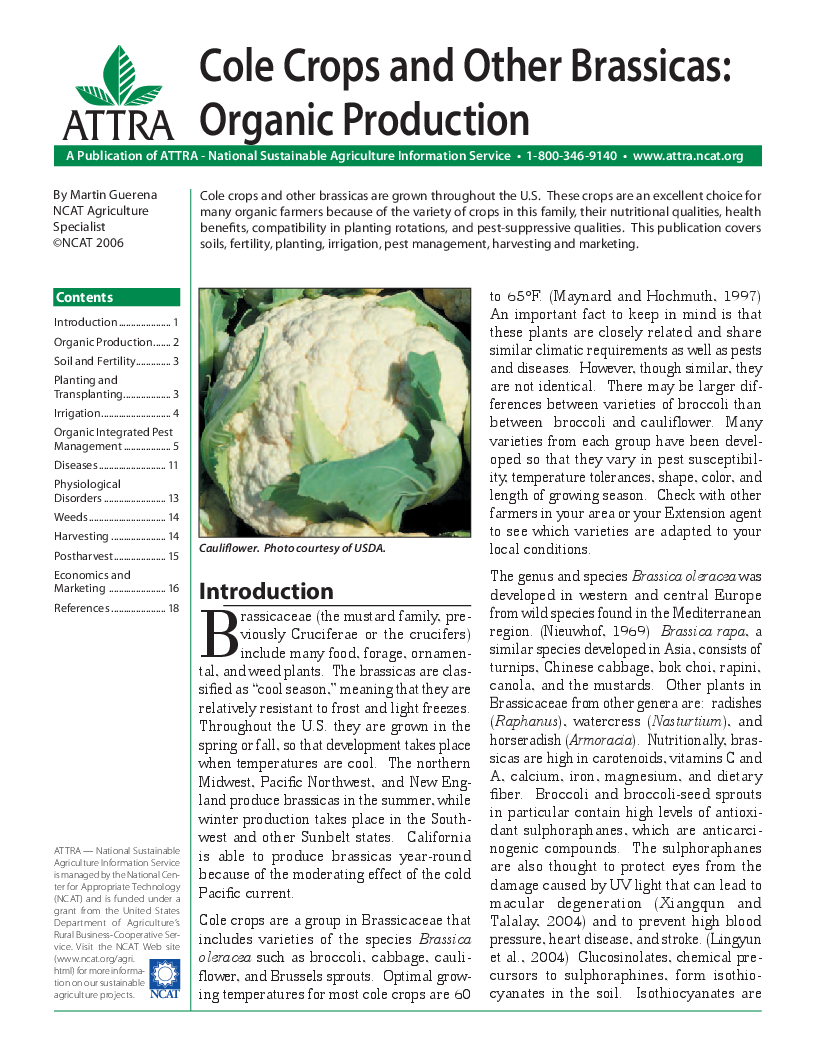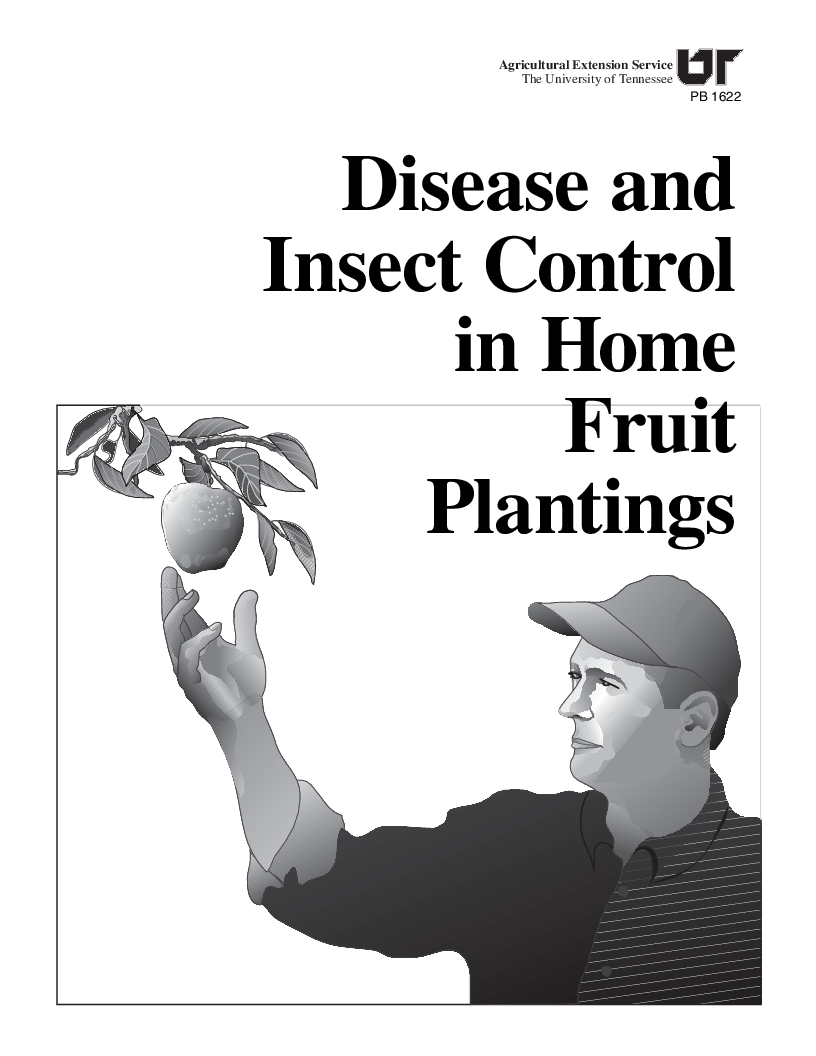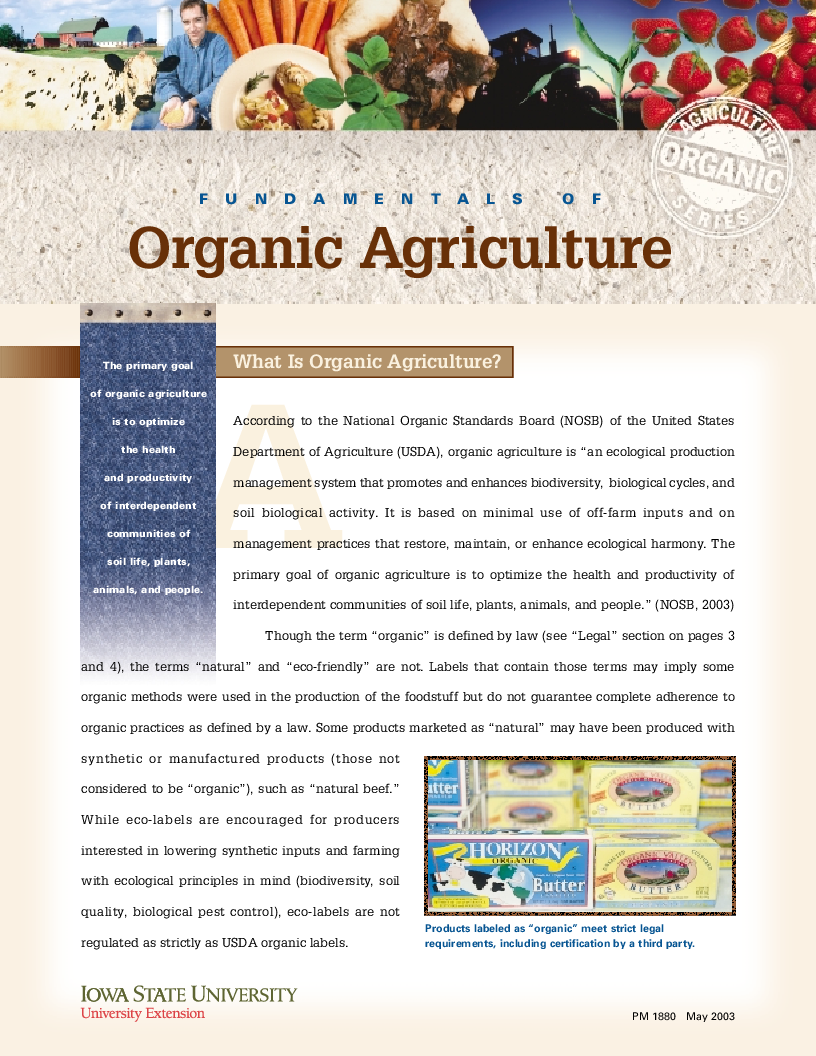Book Details

Cole Crops and Other Brassicas Organic Production
Cole crops and other brassicas are grown throughout the U.S. These crops are an excellent choice for
many organic farmers because of the variety of crops in this family, their nutritional qualities, health
benefits, compatibility in planting rotations, and pest-suppressive qualities. This publication covers
soils, fertility, planting, irrigation, pest management, harvesting and marketing.
Brassicaceae (the mustard family, previously
Cruciferae or the crucifers)
include many food, forage, ornamental,
and weed plants. The brassicas are classified
as “cool season,” meaning that they are
relatively resistant to frost and light freezes.
Throughout the U.S. they are grown in the
spring or fall, so that development takes place
when temperatures are cool. The northern
Midwest, Pacific Northwest, and New England
produce brassicas in the summer, while
winter production takes place in the Southwest
and other Sunbelt states. California
is able to produce brassicas year-round
because of the moderating effect of the cold
Pacific current.
Author: Martin Guerena
Pages: 20
Issue By: eBook 707
Published: 3 years ago
Likes: 0


